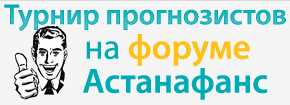The Explainer — Whose blood is it anyway? — from VeloNews.com
-
- Views: 11 514.
The Explainer - Whose blood is it anyway?
By Charles Pelkey
Posted Feb. 11, 2009
Dear Explainer,
I just read that Alejandro Valverde is being brought before CONI in relation to Tour blood samples being linked via DNA to Puerto samples collected. I was just wondering how it is that an Italian Olympic Committee can pursue charges on a Spanish rider in relation to a Spanish investigation based on samples collected at a French event. Perhaps I'm confusing the roles of UCI and WADA, but are there not jurisdictional issues here?Thanks for your consideration.
Gavin Eaton
Victoria, BC, CanadaHello Gavin,
You are right. It does raise some interesting jurisdictional issues.First off, the Italian Olympic Committee (CONI) has summoned him to appear before a hearing investigating charges that he has violated Article 2.2 of the WADA Code, which is the general provision that bans certain drugs and practices. The prohibited substances list falls under the provisions of 2.2, as do bans on homologous and autologous blood doping. Homologous blood doping – putting someone else’s red blood cells into your system — is what Alexander Vinokourov and Tyler Hamilton were found guilty of. Autologous blood doping — storing and then reinjecting your own blood — is a little harder to prove. The Puerto case, however, opened up a whole Pandora’s Box of autologous doping cases, since suspected athletes had blood stored somewhere other than their own bodies, namely Dr. Fuentes’ refrigerator.
As you know, Puerto led to the suspension of Ivan Basso, who was only planning to put his blood back into his system and resulted in the early retirement of Jan Ullrich. Both of them got nabbed after DNA tests matched the blood in their bodies to that blood in the above-mentioned refrigerator. Valverde may now be facing the same problem, based on those samples collected at this year’s Tour.
All of this you probably already know, but the question is, why Italy? Why not France? Why not Spain? I used to think I had the WADA Code pretty wired, but this one had me scratching my head, too. The cool thing is that the lawyers I called were just about as confused as you and I are, but after a bit of scanning the rules and looking back at similar cases, I think I can take a stab at this one.
Normally, a rider can be subject to an anti-doping investigation and adjudication in the country in which he holds a license. That, for example, is why Michael Rasmussen was suspended by Monaco’s cycling federation, despite the fact that he is a citizen of Denmark. If that rider’s national federation drops the ball, the UCI can step in and pursue the case, too.
Valverde is a citizen of Spain and holds a license through his own national federation. There are circumstances in which countries may assert authority over a rider from another country while he competes within their respective borders. A review of Valverde’s record shows that while he rarely competes in Italy, he does on occasion, most recently in the world championships in Varese on September 28, 2008. More importantly, he raced in the Tour de France last year. Remember that the Tour stopped in Italy at one point and that's where the sample in question was drawn.
Italy is asserting its jurisdiction based on that stage stop in Prato Nevoso and arguing that the offense in question — the dealings with the infamous Doc in Madrid — now falls under the jurisdiction of Italy, because the follow-up sample was taken in Italy. That might meet what law students and lawyers in the U.S. refer to as the “minimal contact” (International Shoe anyone?) necessary to allow for jurisdiction in the case. We’ll see.
It could be that CONI investigators are simply frustrated with the on-again-off-again nature of the Puerto investigation in Spain (remember all of this stuff started nearly three years ago) and may, upon receiving evidence in the case be testing the limits of its jurisdiction. Hey, the Italians already lost one of their cycling heroes — Ivan Basso — to Puerto and if the Spanish aren’t going to do anything about theirs … Well, you get the picture.
CONI has also notified the UCI and WADA of its intentions and may be seeking some level of cooperation with international authorities as is called for under the new International Convention Against Doping in Sport, a global treaty now ratified by more than 100 countries.
If the evidence is compelling, the UCI may pick up the baton and pursue the case, which it has the authority to do, particularly when a national governing body isn’t taking steps the UCI deems to be necessary.
CONI may just be pursuing the matter to get the ball rolling. We would not be surprised if Valverde either doesn’t show up next Monday or even if he does, his attorneys to raise a jurisdictional argument straight out of the gate when the hearing begins.
-
Related Posts
-
-- enable recent posts plugin --
-
Leave a Reply

